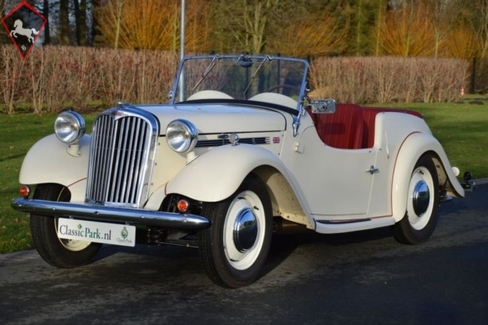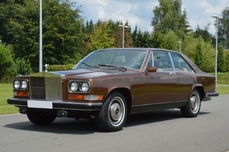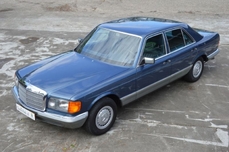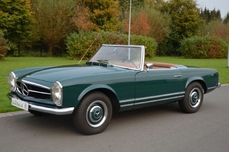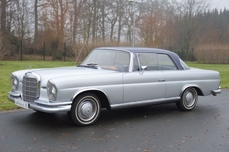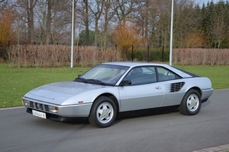Singer SM1500 Roadster 4AD T1500 1954
General description :
Specific This Singer SM Roadster 4AD T1500 as offered by Classic Park is in a very good condition and is equipped with the optional twin carburetor. The car has been restored body off. Since then, the car has hardly been used. Pictures from the restoration are available and comes with the car.
General The Singer SM Roadster 4AD T1500 was the final version from the model and has been produced from 1951 till 1955. The 4AD was first seen on the Paris Motor Show in October 1951. The engine is 1.497 cc and produces 48 hp (36 kw). From 1953, optional it was possible to have a twin carburetor on the engine.
http://home.mobile.de/CLASSICPARK#des_238263298
1954 Singer SM1500 Roadster 4AD T1500 is listed sold on ClassicDigest in Koppenhoefstraat 14NL-5283 VK Boxtel by Auto Dealer for €27500.
Car Facts
Car type : Car Make : Singer Model : SM1500 Model Version : Roadster 4AD T1500 Engine size : 0.0 Model Year : 1954 Sub type : Convertible Location : Koppenhoefstraat 14NL-5283 VK Boxtel
Sold
Seller Information
Sold
Other cars listed for sale by this dealer
About Singer
Singer was a well-known name in both sewing machines and automobiles. The Singer brand expanded into car manufacturing in the early 20th century, producing cars that were notable for their quality, innovation, and engineering excellence. Here's a brief history and some key models of Singer cars:History of Singer Cars:
Foundation: The Singer Company began as a bicycle manufacturer in the 19th century and later diversified into sewing machines. In 1905, they ventured into car manufacturing, starting with their first prototype.
Early Years: Singer cars gained popularity for their reliability and performance. They were known for their innovative features, including advanced engine designs and sturdy chassis.
Key Models of Singer Cars:
Singer 10: Introduced in the 1910s, the Singer 10 was a small car available in various body styles. It was one of the early successful models for the company.
Singer Junior: The Junior series was introduced in the 1920s and continued into the 1930s. It was a range of small cars with different engine sizes and body styles, catering to various customers.
Singer Nine: The Singer Nine, launched in the mid-1930s, became a significant model for the company. It was known for its performance and handling, appealing to enthusiasts and drivers seeking a sporty driving experience.
Singer Le Mans: The Singer Le Mans was a sports car introduced in the late 1930s. It was named after the iconic 24 Hours of Le Mans endurance race and aimed to capture the spirit of racing.
Singer SM1500: Post-World War II, Singer introduced the SM1500, a larger car featuring a 1.5-liter engine. It was a step towards more modern designs and aimed at the family car market.
Legacy:
Singer cars were appreciated for their craftsmanship, engineering quality, and their emphasis on delivering a reliable driving experience. However, after World War II, the company faced challenges in keeping up with larger competitors, leading to financial difficulties.
In the late 1950s, Singer was acquired by the Rootes Group, a British automobile manufacturer, and the brand was gradually phased out. Despite its eventual decline, Singer cars left a legacy of well-built vehicles that were respected for their innovation and performance during their heyday. Today, vintage Singer cars are cherished by automotive enthusiasts and collectors for their historical significance and craftsmanship.
